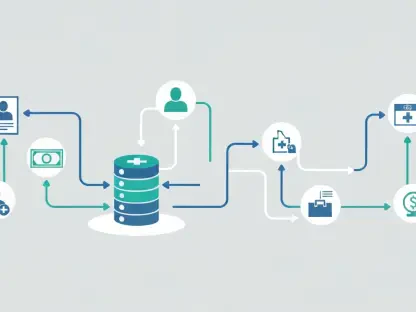The collaboration between Globe Telecom Inc., a leading telecommunications company in the Philippines, and Red Hat, Inc., the foremost provider of open-source solutions, marks a significant stride in Globe’s digital transformation journey. This partnership seeks to modernize Globe’s IT infrastructure using Red Hat OpenShift, ultimately enhancing operational efficiency, developer productivity, and customer experience.
Modernizing Globe Telecom’s IT Infrastructure
The Role of Red Hat OpenShift
Leveraging Red Hat OpenShift, Globe is integrating advanced open-source technologies to improve agility, scalability, and innovation capabilities. OpenShift, powered by Kubernetes, is a leading hybrid cloud application platform integral to this transformation. By adopting OpenShift, Globe aims to transition from traditional telecom operations to a technology-driven enterprise. This new platform facilitates containerized applications and continuous integration/continuous deployment (CI/CD) pipelines.
The adoption of OpenShift signifies a major shift in strategic direction for Globe Telecom. As the company moves away from legacy systems, it begins to embrace the potential of new technological advancements. Containerized applications enable developers to create modular software components that can be easily integrated, updated, or replaced. This decoupling of application components leads to increased flexibility and faster development cycles. Moreover, CI/CD pipelines—which automate the process of integrating and deploying code changes—allow Globe’s development teams to deliver new features and updates with greater speed and reliability. This, in turn, reduces time-to-market and improves the overall user experience for Globe’s customers.
The Red Hat Open Innovation Labs Residency
The residency program fostered an immersive collaboration between Globe engineers and Red Hat experts. This partnership allowed for the integration of open-source technologies and adoption of DevOps methodologies. Through this collaborative effort, Globe’s teams were able to migrate their first application modules to Red Hat OpenShift swiftly. The Open Innovation Labs provided a hands-on environment where engineers could experiment with new tools and practices, significantly improving their skill sets and operational workflows.
The immersive residency allowed Globe engineers to delve deep into the intricacies of OpenShift and other open-source technologies. By working directly with Red Hat experts, Globe’s teams gained firsthand experience in DevOps methodologies, which prioritize collaboration, automation, and iterative development. This environment encouraged proactive problem-solving and innovation, reinvigorating Globe’s approach to software development and IT operations. The hands-on learning experience was invaluable, equipping engineers with the know-how to manage and leverage the new platform effectively. This foundational shift in skills and culture is essential as Globe positions itself as a forward-thinking, technology-driven entity.
Immediate Benefits of the Transformation
Enhanced Operational Efficiency
Adopting test-driven development and automation significantly reduced test execution times by 80%, eliminating manual report generation. This transformation allowed more frequent testing cycles, accelerating the development process and improving overall productivity. Test-driven development (TDD) ensures that test cases are created before code implementation, which helps in identifying issues early in the development cycle. As a result, Globe’s developers could focus more on feature enhancements and innovation rather than spending time on debugging and manual testing.
The automation of testing processes also paved the way for more consistent and reliable software releases. The reduction in test execution time meant that new features and updates could be rolled out more frequently, keeping Globe’s services up-to-date and competitive. Moreover, automated testing removes the bottlenecks associated with manual testing, greatly increasing the throughput of the development pipeline. This newfound agility is particularly crucial in the fast-paced telecom industry, where customer demands and technological advancements evolve rapidly. Globe’s ability to quickly adapt and respond to these changes positions it as a more agile and responsive service provider.
Faster Resource Provisioning
Utilizing a GitOps-based cloud-native approach, Globe achieved 75% faster resource provisioning. Features like zero-touch provisioning, self-healing, and auto-scaling enabled this rapid deployment, enhancing the scalability of their applications. The new processes established during the residency program helped Globe’s teams form cross-functional collaborations, further optimizing resource usage and operational efficiency.
Zero-touch provisioning automates the setup of environments based on predefined configurations, eliminating the need for manual intervention. Self-healing capabilities ensure that the system can automatically detect and rectify issues, thus maintaining uninterrupted service. Auto-scaling adjusts resources dynamically in response to varying loads, ensuring optimal performance at all times. These features collectively enabled Globe to manage resources more effectively, reducing waste and enhancing overall system robustness. The cross-functional collaborations and streamlined processes contributed to a more cohesive and coordinated approach to IT operations, fostering a culture of continuous improvement and operational excellence.
Strengthening Resilience and Availability
Zero Downtime Upgrades
One of the standout benefits is the capability for zero downtime cluster upgrades. This ensures that Globe’s platform remains highly available and demonstrates consistent lifecycle management, paramount for maintaining high customer satisfaction standards. Zero downtime upgrades eliminate the disruptions that typically accompany infrastructure updates, ensuring that services remain accessible to customers without any interruptions.
Consistent lifecycle management involves the systematic handling of software updates, patches, and enhancements, ensuring that the platform remains current and secure. This approach not only minimizes downtime but also guards against potential vulnerabilities and performance bottlenecks. The ability to perform upgrades without affecting service availability is a significant advantage in a competitive telecommunications landscape, where even minimal downtime can lead to customer dissatisfaction and potential revenue loss. Globe’s investment in these capabilities underscores its commitment to delivering seamless and reliable services to its customers.
Self-Healing and Auto-Scaling
OpenShift’s self-healing capabilities and auto-scaling ensure that applications run smoothly with minimal manual intervention. This reliability in application performance is crucial for Globe’s commitment to offering uninterrupted services. Self-healing mechanisms automatically detect and resolve issues, such as failed components or resource shortages, without the need for human intervention. Auto-scaling adjusts resource allocation in real-time based on current demand, ensuring that applications perform optimally even during peak usage times.
The combination of these features enhances the overall resilience of Globe’s IT infrastructure. By reducing the need for manual troubleshooting and intervention, Globe’s IT teams can focus on more strategic tasks, such as innovation and optimization. This robust infrastructure not only improves service reliability but also creates a more agile and adaptive operational environment. For Globe, this translates to better service quality, higher customer satisfaction, and a stronger competitive position in the market.
Strategic Goals and Future Innovations
Culture of Continuous Improvement
Globe aims to achieve operational excellence by evolving tools, processes, and workforce adherence to best practices. The shift towards a DevOps culture is central to this goal, encouraging more collaborative and efficient software development processes. DevOps practices break down the silos between development and operations teams, fostering a more integrated and cohesive approach to software delivery. This cultural shift is not just about adopting new tools but embracing a mindset of continuous improvement, where feedback loops and iterative development become the norm.
Evolving tools and processes involves adopting the latest technologies and methodologies that enable faster, more reliable, and more efficient software development. This includes leveraging automation, monitoring, and analytics to gain deeper insights into system performance and user behavior. Training and upskilling the workforce to adapt to these new tools and practices is equally important. By fostering a culture of continuous learning and improvement, Globe is better positioned to respond to market demands and technological advancements, ensuring that it remains a leader in the telecommunications industry.
Exploring AI Development
With the modernized platform, Globe is well-positioned to innovate further by developing and deploying AI-enabled applications. The seamless transition and robust platform capabilities provide a strong foundation for future technological advancements. Using AI to enhance service offerings and internal operations could lead to new revenue streams and improved efficiency. For instance, AI-driven customer service solutions can provide more personalized and efficient interactions, while predictive analytics can optimize network performance and prevent issues before they occur.
Deploying AI-enabled applications on the OpenShift platform ensures that these innovations can scale effectively and operate reliably. The combination of Kubernetes, DevOps practices, and AI technologies sets a strong foundation for Globe’s future projects. This strategic direction not only enhances the customer experience but also differentiates Globe in a competitive market. As AI continues to evolve, Globe’s commitment to leveraging these technologies will likely yield substantial benefits in terms of both operational efficiency and market innovation.
Conclusion
The partnership between Globe Telecom Inc., a leading telecommunications firm in the Philippines, and Red Hat, Inc., a top open-source solutions provider, represents a major advancement in Globe’s digital transformation efforts. This collaboration aims to upgrade Globe’s IT framework by leveraging Red Hat OpenShift, a premier Kubernetes platform. By implementing Red Hat’s technology, Globe seeks to boost operational efficiency, increase developer productivity, and improve the overall customer experience.
Globe Telecom, known for its commitment to innovation, sees this partnership as a strategic move to fortify its infrastructure. Red Hat OpenShift’s robust, flexible platform allows Globe to streamline operations and deliver services more effectively. The open-source nature of Red Hat’s solutions also provides a scalable and secure environment, crucial for adapting to the ever-changing digital landscape.
Furthermore, this collaboration signifies Globe’s dedication to staying ahead in a competitive market by adopting cutting-edge technologies. By modernizing its IT infrastructure, Globe aims to reduce time-to-market for new services and enhance its capability to respond to customer needs swiftly. This modernization is expected to not only boost internal efficiency but also provide a superior customer experience, aligning with Globe’s long-term strategic goals.









